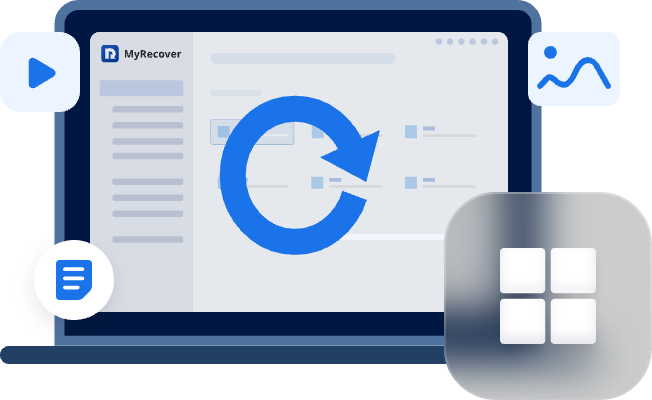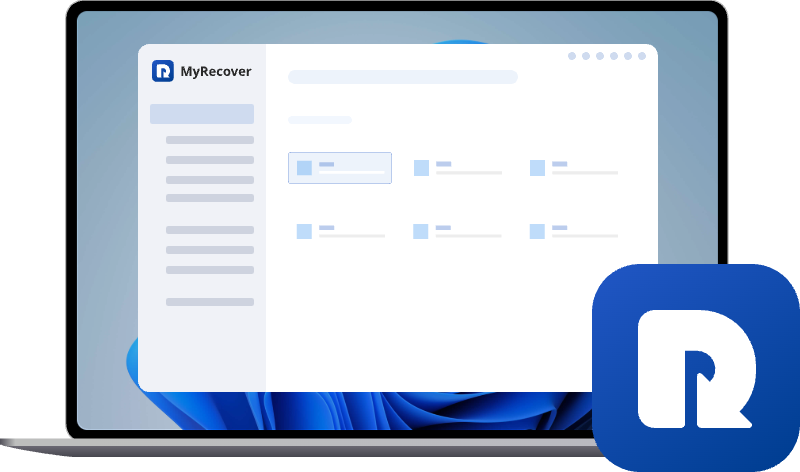How to Recover Data from EFI Partition on Windows
When your computer's EFI partition gets missing and you cannot boot the computer anymore, do you know how to get it back? This guide covers how to recover data from EFI partition and comprehensive knowledge about EFI partition.
What is EFI Partition?
The EFI partition, also known as EFI System Partition (ESP), is a small and hidden partition on modern computers that plays a critical role in the UEFI boot process. It is usually only 100-500MB in size and typically appears as the EFI partition in Disk Management. It contains the bootloader, which is responsible for loading the operating system or other system utilities.
A healthy EFI partition is critical to ensuring proper system functionality. During the boot process, UEFI firmware accesses files stored on the EFI partition, streamlining the startup sequence by targeting specific drives instead of scanning the entire system.
Normally, you cannot see the EFI partition in File Explorer. To prevent accidental deletion that could cause the computer unbootable, it has no drive letter. If you try to delete it in Disk Management, you'll find that all functions except the "Help" option are unavailable. However, unexpected situations can still occur. If the EFI partition is deleted or damaged, how can data be recovered from it? Let's dive into the recovery solutions.
How to Recover Data from EFI Partition on Windows
As previously mentioned, the EFI partition stores the boot configuration data for Windows startup. Therefore, only boot data can be recovered from the EFI partition, not personal data. The health of the EFI partition directly determines whether the computer can boot normally. If the partition is missing, corrupted or inaccessible, the computer will fail to boot. Creating a Windows installation media (such as USB flash drive) is necessary to recover boot data from the EFI partition.
Solution 1. Repair the EFI Bootloader (corrupted)
Bootloader is the core of modern system startup, which serves to load the operating system (OS) during the boot process. Bootloader issues will directly cause the EFI partition to crash, rendering the device unbootable. When the EFI partition crashes, attempting to repair boot problems themselves rather than reinstalling the operating system is a better choice.
Windows Automatic Repair
Automatic Repair is a Windows recovery tool that can fix certain system problems that might prevent Windows from starting. This tool is particularly useful when your computer is experiencing issues such as missing or damaged system files, corrupted boot configuration data, or other startup-related problems.
Step 1. Insert the USB installation drive into the computer and boot from the USB drive.
Step 2. On the installation window select "Repair your computer". Then choose Troubleshoot > Advanced options > Automatic Repair.
After that, the system will try to repair the EFI bootloader automatically. If all goes well, your boot loader will be fine and the system will boot again.
Repair Using Command Prompt
In case if the automatic repair method doesn't work for you and the issue is still there, then you can try using the different repair commands. Here you can recover data by diskpart using Command Prompt from EFI partition.
Step 1. Insert the USB installation drive into the computer and boot from the USB drive.
Step 2. On the installation window select "Repair your computer". Then choose Troubleshoot > Advanced options > Command Prompt.
Step 3. Type and run the command:
Launch diskpart: diskpart
Liat all of the disk on the computer: List disk
Select the target disk: Select disk 1 (replace the disk unmber with your actual disk where the EFI partition is stored)
List all of the volume on the disk: List volume
Select the correct volume on the disk: Select volume 4
Add a new drive letter for the EFI partition: Assign letter=F
Exist the diskpart: Exit
Step 4. Go to the bootloader directory and type the command
Cd /d F:\EFI\Mirsoft\Boot\
Bootrec /fixboot
Solution 2. Rebuild the EFI Partition (deleted or missing)
If Windows repair tools fail to fix the bootloader, or the EFI partition is deleted or disappears, you may need to recreate an EFI partition and then install EFI boot loader to make the hard drive bootable.
Step 1. Use the USB installation media to boot the computer and press shift+F10. Then the shortcut will lead you to the "command prompt" window.
Step 2. In the opened prompt window type these commands to recreate EFI partition.
Diskpart
List disk
Select the disk 1
List partition
Select partition 2
Shrink desired=500
Step 3. Then you can create an EFI partition using unallocated space.
Create partition EFI
Format fs=FAT32 quick
Assign letter=Y
Exit
Step 4. After those two partitions have been successfully created, use the commands below to install the boot loader and other applications needed.
bcdboot C:\windows /s Y:
step 4. Reboot your computer to check if it is fixed.
If the problem still cannot be resolved, reinstalling the system with installation media is the only option left. It can restore your system to a stable state, but it will erase all data, settings, and applications from the old system during the process.
How to Recover Data from an Unbootable Computer Due to Broken EFI Partition
Since the EFI partition is critical for your computer’s boot process, a corrupted or missing EFI partition will indeed prevent it from starting up. But what happens to the data stored on the computer? Are they lost forever, or can they be recovered once the issue is fixed? The answer is reassuring: with MyRecover, you can retrieve all your personal data intact.
Step 1. Download and install the Professional version of MyRecover on a working computer.
Step 2. Prepare a USB flash drive (or DVD/CD) and connect it to the computer.
Step 3. Launch MyRecover and click "PC Crashed Recovery", then choose "USB Boot Device" and click on "Create" to create a bootable media.
Step 4. Wait several minutes until the message " Creating a bootable USB device was successful" shows on the screen.
Step 5. Insert the USB into the unbootable computer and boot it. Enter the BIOS system and choose the USB to boot the computer.
Step 6. Then you can select the drive where you want to recover files to scan lost files and click "Scan".
Step 7. After the scanning is finished, you can choose the files in the recoverable list and click "Recover" to retrieve files from the crashed computer.
Step 8. Select a different and safe drive to save the recovered files (such as another healthy external drive).
Then you can check the files in the destination folder.
Conclusion
In summary, the EFI partition is critical for a computer's boot process. The health of the EFI partition is beneficial to the computer's data. If you are experiencing a failure to start the computer due to a corrupted or missing EFI partition, you can try the methods mentioned above. Additionally, if you want to recover personal files from an unbootable computer, MyRecover is highly recommended. For enterprise users, the Technician version of MyRecover is specifically designed for businesses.


